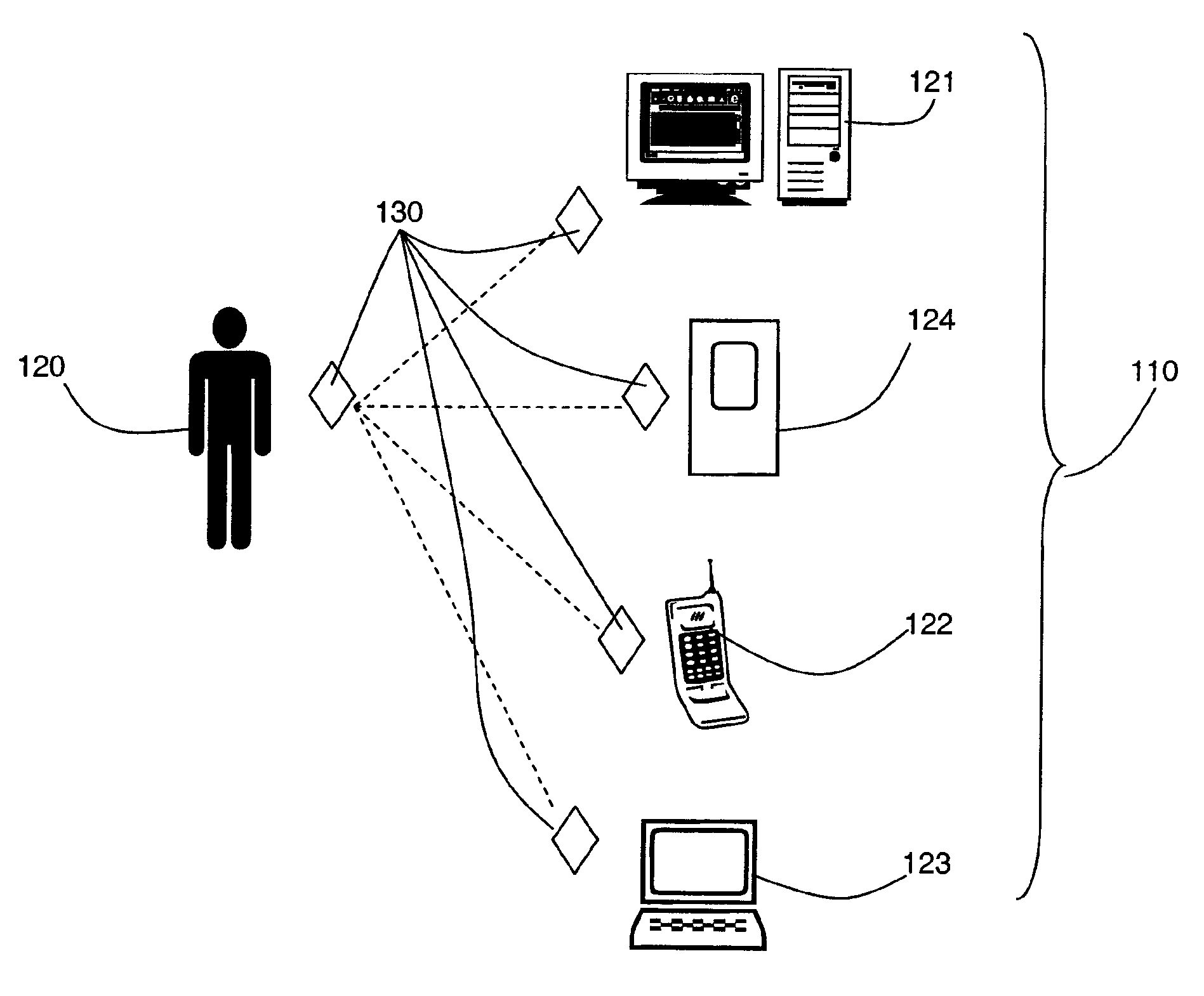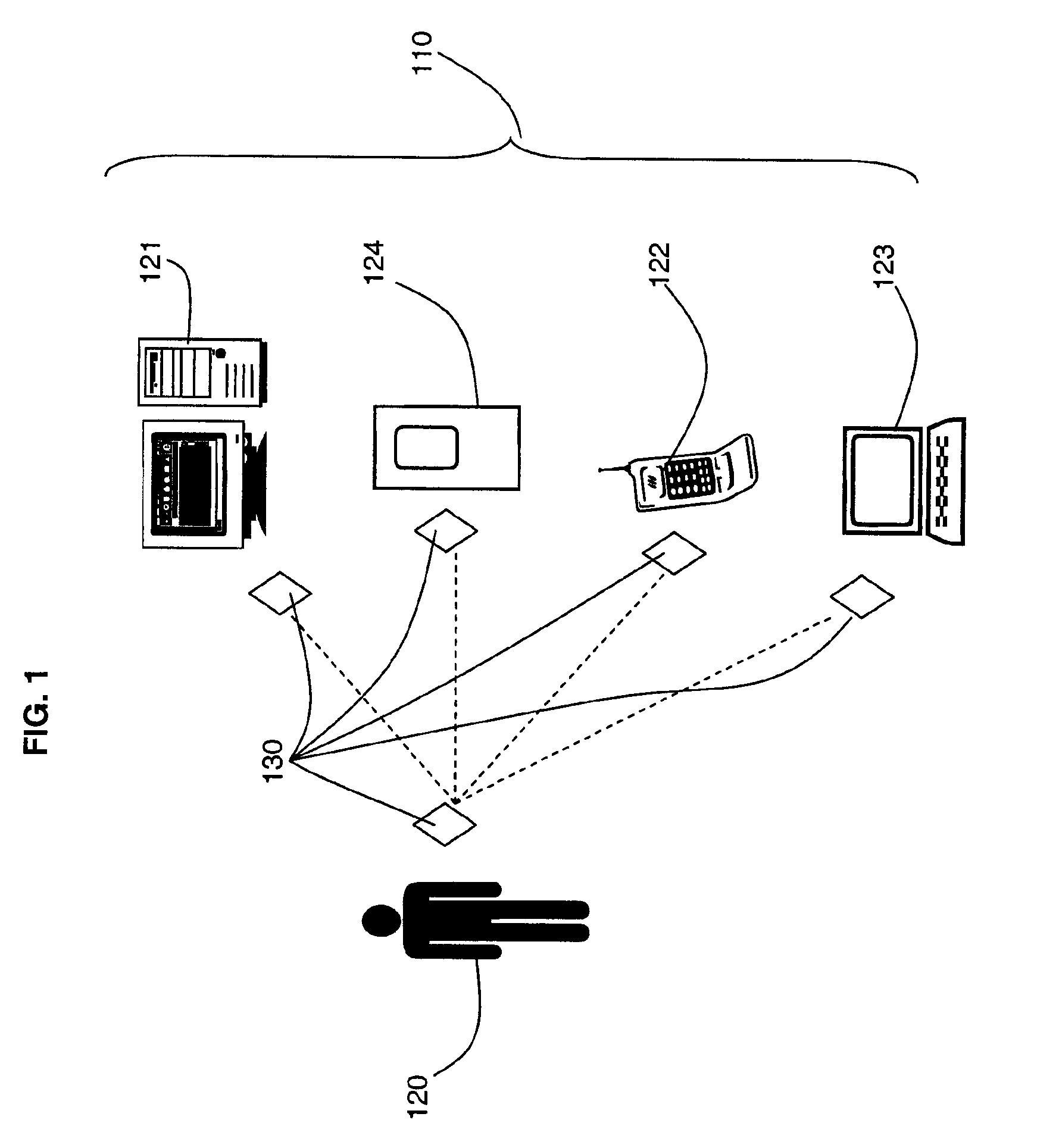System and method for locking electronic devices
a technology of electronic devices and locking systems, applied in the field of electronic device security, can solve problems such as unsatisfactory solutions, interruptions, and other electronic devices that could pose security risks if left unattended, and achieve the effect of adding to the security of a user's computer and other electronic devices
- Summary
- Abstract
- Description
- Claims
- Application Information
AI Technical Summary
Benefits of technology
Problems solved by technology
Method used
Image
Examples
Embodiment Construction
[0026]A security system is provided in which one or more users and a plurality of devices are tagged with electronic tags and the system activates locking commands on the devices when they are not in the same location as their designated user.
[0027]An embodiment of such electronic tags is provided by Radio Frequency Identification (RFID) technology, although other forms of tags and readers may be used.
[0028]Radio frequency identification (RFID) technology exists in which tags are provided in the form of transponders that are embedded in items to act as identifiers of the items. Readers or scanners act as an interface between the transponders and a data environment. Transponders and the means used to read them are available is a number of forms. Any suitable form can be used for the purposes of the present invention.
[0029]The antenna emits radio signals to activate the tag and to read and / or write data to it. Antennas can be built into a door frame to receive tag data from persons or...
PUM
 Login to View More
Login to View More Abstract
Description
Claims
Application Information
 Login to View More
Login to View More - R&D
- Intellectual Property
- Life Sciences
- Materials
- Tech Scout
- Unparalleled Data Quality
- Higher Quality Content
- 60% Fewer Hallucinations
Browse by: Latest US Patents, China's latest patents, Technical Efficacy Thesaurus, Application Domain, Technology Topic, Popular Technical Reports.
© 2025 PatSnap. All rights reserved.Legal|Privacy policy|Modern Slavery Act Transparency Statement|Sitemap|About US| Contact US: help@patsnap.com



